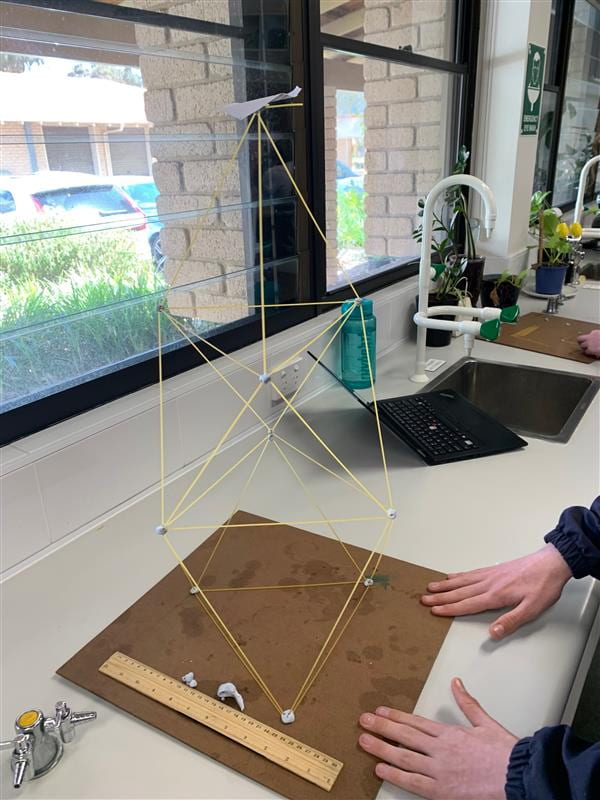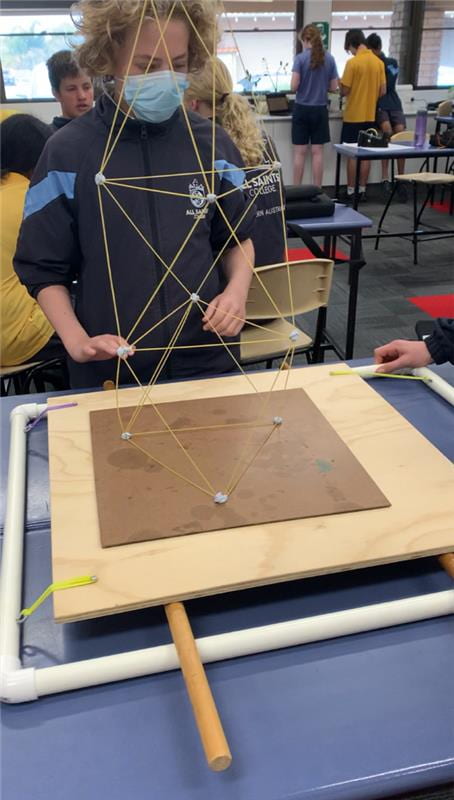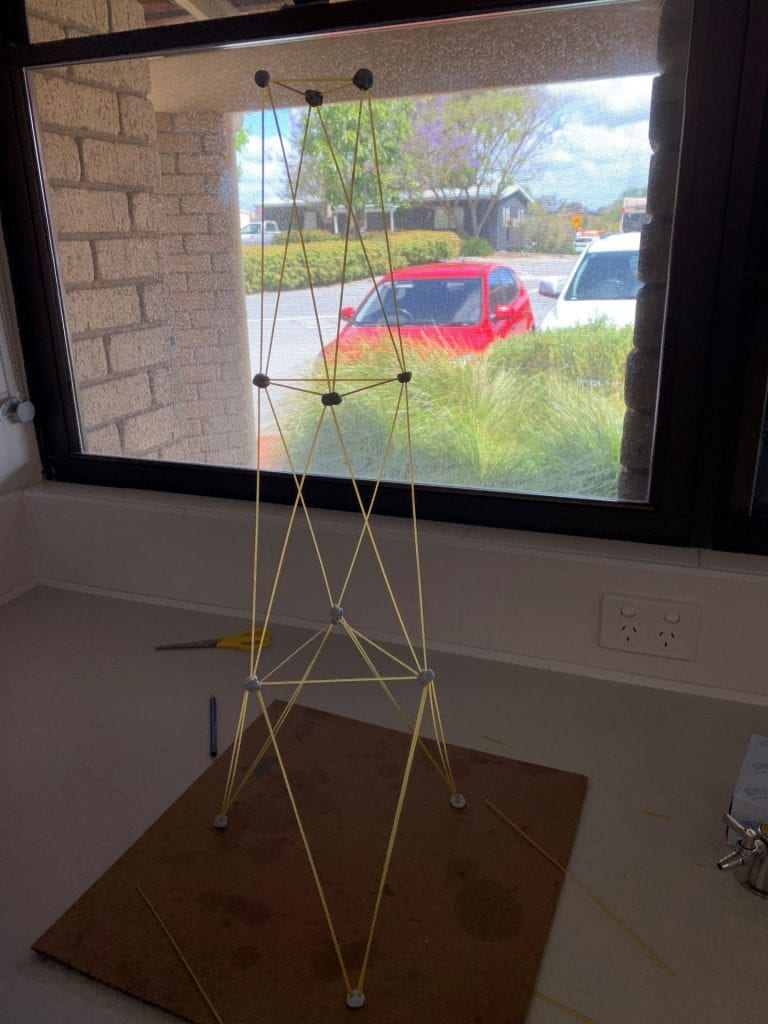The Project
More than 20,000 people die because of earthquakes every year. For this reason is is very important that we discover new ways to make our infrastructure more resistant to earthquakes. We have to follow the engineering process used by real life engineers to try to create an earthquake resistant building out of spaghetti and blutack. This building has certain restrictions and requirements, including having a minimum height of 60cm. The maximum base is 30 x 30 cm. The peak of the building must be a minimum of 5 x 5 cm. We also have restrictions on materials. We have $60 total. 1 spaghetti stick is $1, and 1g of blutack is $1. Once we have finished our final design we will test it in an earthquake simulation to see whether it survives. To say that we achieved our goal our tower needs to withstand 10 seconds of P wave and 5 seconds of S waves.
Our Designs



The Engineering Process
The engineering process is a set of steps that helps everyone trying to solve an engineering problem from large scale skyscrapers to our spaghetti towers. The first step is to define the problem. What are you trying to do and what are your parameters? The second step is to brainstorm. In this step you can write or sketch any ideas you have. The more you have the better as it allows you to trial different designs to see what works and what doesn’t. The thirds step is to research. See how other people are solving a similar problem and the science and technology that they are using. From this you can find some possible solutions to solve your problem. The fourth step is to design a solution. Combine your research with the ideas from your brainstorm and create a detailed sketch to show what you are going to build. You must include details such as the measurements and the amount of resources needed. The fifth step is to create a prototype based on the design you created in step four. The final step is to test this design to see whether it solved your problem. If it did then great you have completed your objective. Even if it did solve your problem then this is your chance to add improvements and refine your design. One you have finished then you can share your findings with others so that anyone who is trying to solve your problem can see what you did.